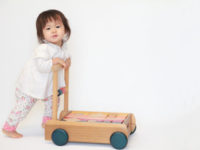Guest post by Naileth Ariza B.
Cultural appreciation manifests across various industries, notably within workplace culture, culinary practices, and integration methods. Among these, the fashion industry stands out as a visually stunning representation. While fashion primarily targets adults, numerous cultural fashion shows also celebrate the unique traditional baby clothes.
A widespread tradition across cultures involves swaddling babies in wraps or blankets for warmth and comfort. Yet, the significance of the garments worn beneath these swaddles, and their cultural importance in the baby fashion industry, also deserves attention.
Here, we present several children’s clothing styles from around the world, highlighting their traditional significance.
4 Popular Traditional Children’s Clothing Styles from Around the World
Every country’s diverse ethnic groups cherish cultural attire to celebrate their infants. Some well-known examples of these traditional garments include:
1. Japanese Baby Kimonos
Traditionally, Japanese attire consists of a wrap dress complemented by a specially designed sash for a snug fit, known as the kimono. On special occasions, Japanese babies are adorned in kimonos, and modern adaptations have introduced onesie versions that maintain the dress’s traditional essence.
2. West African Dashiki
These vibrant, loosely fitted shirts are prevalent across many West African tribes. The dashiki features bold, colorful prints with distinctive patterns and hues, making it a favored choice for babies and customizable for children of various sizes.
3. Philippines Baro’t Saya and Barong Tagalog
During national celebrations, Christmas, and other holidays, Filipino traditional outfits take center stage. These garments, emblematic of rural Philippine life, include fine, silk blouses with flowy sleeves and striped skirts for females, and for males, attire with cuffs, collars, and longer sleeves. These outfits cater to children of all ages, allowing them to celebrate their heritage.
4. German Dirndls and Lederhosen
Germany boasts a wealth of Trachten (costumes), with the Dirndl being particularly popular among young girls. This dress resembles Fraulein Maria’s outfit from “The Sound of Music.” Boys wear unique breeches known as Lederhosen, typically paired with high socks, leather shoes, a jacket, and accessories.
Conclusion
Globally, various continents, tribes, and ethnicities celebrate their culture through traditional attire, with children actively participating in this heritage celebration. For those seeking style ideas for culture-themed occasions, the options are plentiful. When dressing your child in the traditional attire of another culture, it’s crucial to approach with respect, fostering cultural appreciation rather than appropriation.





